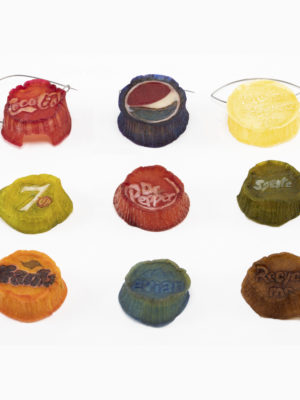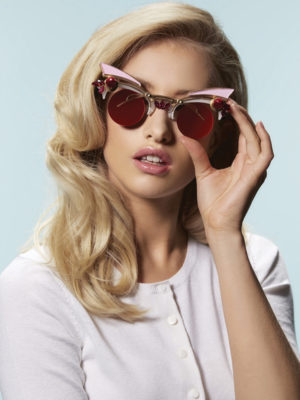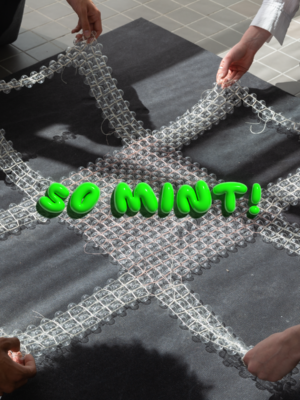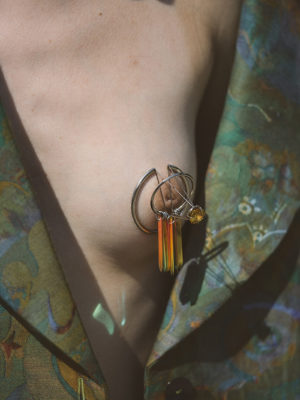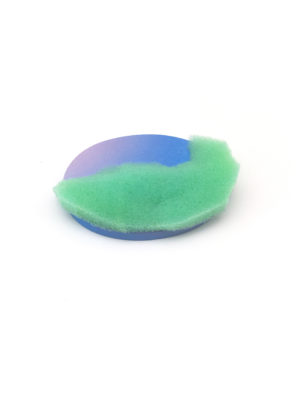We are currently living in a time in which we cannot ignore the grave problem that our planet is suffering as a result of our over consumerism. In the last ten years, more plastic has been made than in the previous century. An indestructible material is constantly being used to create disposable objects. It is in the mindset of many that when this material is discarded it is completely destroyed. Unfortunately, this is not how it stands.
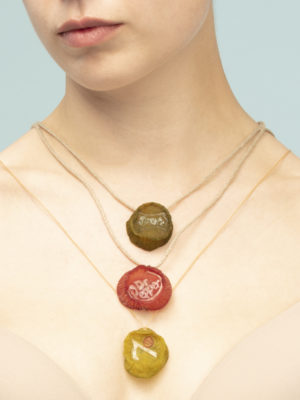
Whilst doing some research to learn more about the climate situation and the ways I was able to contribute my part; I came across ‘A Plastic Ocean’, a documentary about our plastic waste and the impacts that it has on our environment, the ocean and over us as humans. The part that shocked me the most from the hour and a half film was seeing Dr. Jennifer Lavers, a seabird biologist, open up the stomach of a young seabird and extract 234 pieces of plastic, all sizes and colours.
The seabird had died from starvation since the plastic ingested made them feel satiated and they stopped eating.
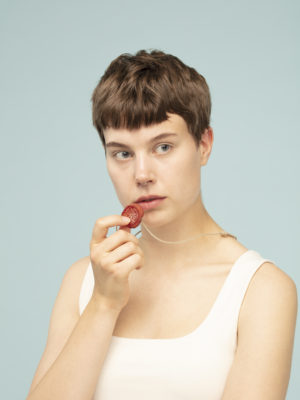
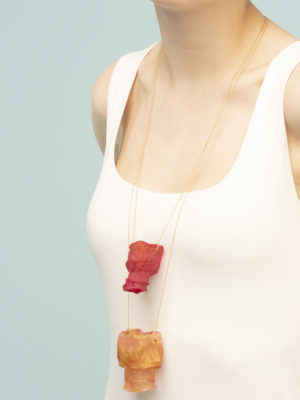
It hurt me that our actions, our consumption habits and the poor administration of our waste is hunting other species, destroying their homes and contaminating their food as well as our own. Our egocentrism has blinded us, and there is undoubtedly a need for change. I decided that I did not only need to be more conscious of my domestic waste but also the waste my art produces, the chemicals and materials that I will be putting in the environment. I had to ensure that if by any chance my pieces find their way to the sea, to the soil or the land field, they will not be harmful, instead they will give back.
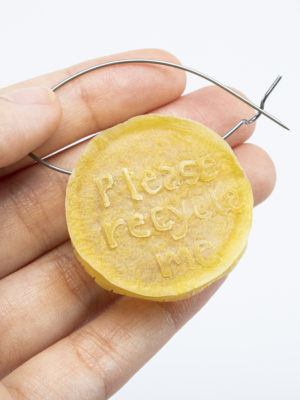
I focus on creating biodegradable jewellery. The purpose is for it to eventually disappear but to leave a message. My reason to use potatoes was initially unintentional as I left some remains in hot water. The hot stove evaporated the water and eventually dehydrated the potato pieces leaving them with an incredible transparency and hardness. With the help of an electric heat dryer, I started to replicate the same outcome. I carved the potatoes to make them look like our everyday disposable objects, from bottle caps to the micro plastic found in seabirds and other marine animals. Using natural dyers like beetroot juice, turmeric, green and blue spirulina, milk and other products to create a diverse range of colours maintaining them as natural as possible. Using carving and other ordinary kitchen techniques such as boiling and dehydrating, I was able to come out with a colourful collection that you can see evolve and disappear with time.
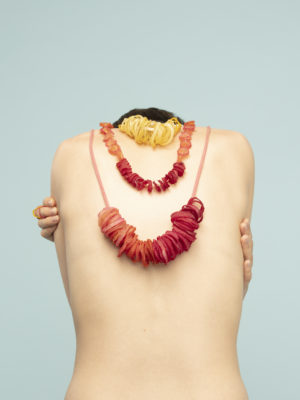
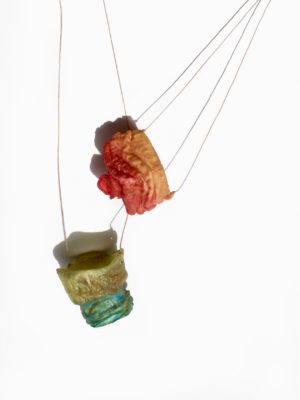
With this collection, I have challenged myself by using a material, which I have always seen as food. In order to create short life statement pieces, I have broken the boundaries of their common use.
